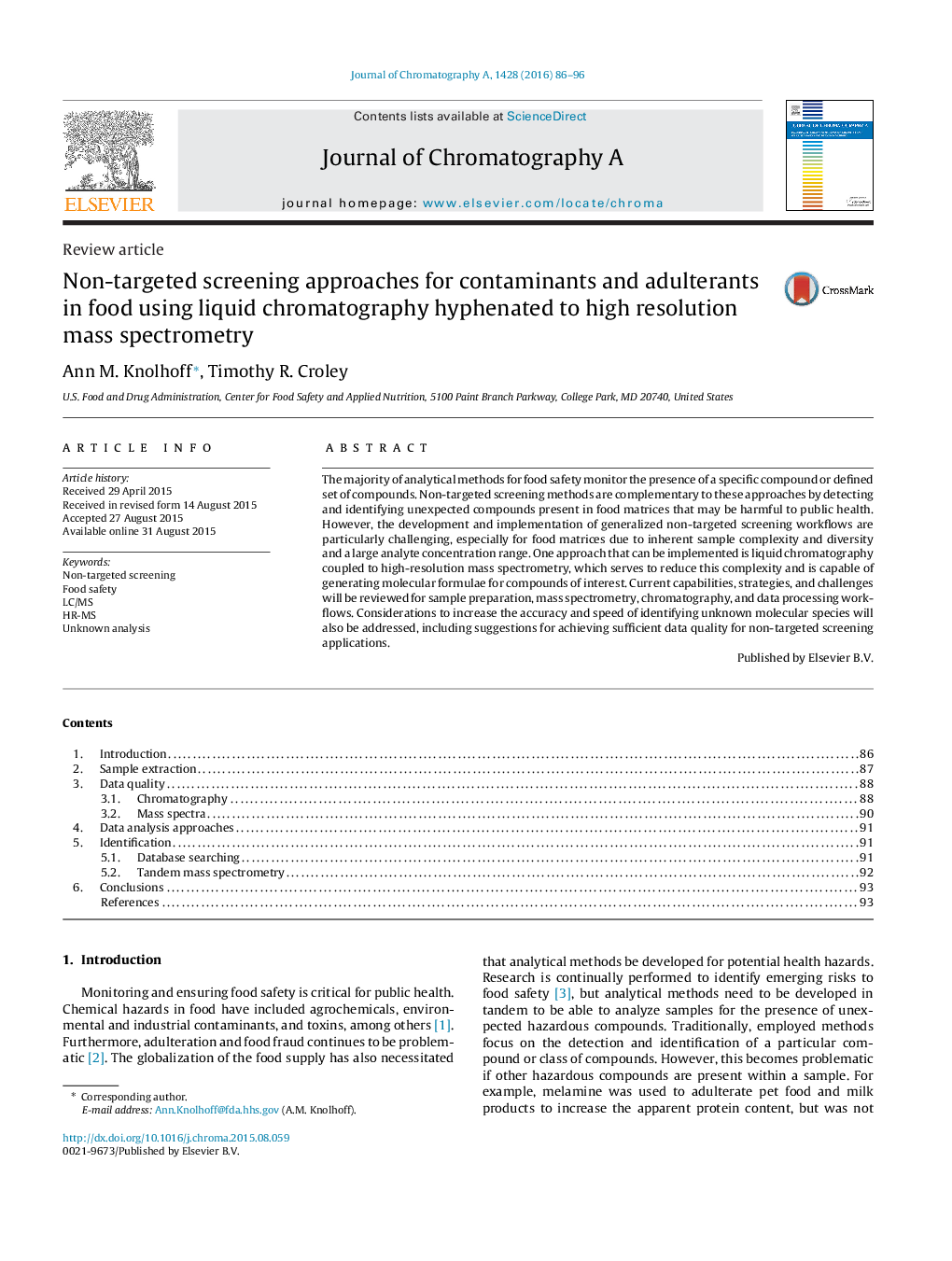| Article ID | Journal | Published Year | Pages | File Type |
|---|---|---|---|---|
| 1199027 | Journal of Chromatography A | 2016 | 11 Pages |
•Non-targeted screening methods enable the identification of unexpected compounds.•Challenges in non-targeted food analyses include analyte amount & sample complexity.•Sample preparation, instrumental, & data analysis approaches are discussed.•Successful screening requirements, including needed data quality, are described.•Database searching & tandem mass spectrometry approaches are reviewed.
The majority of analytical methods for food safety monitor the presence of a specific compound or defined set of compounds. Non-targeted screening methods are complementary to these approaches by detecting and identifying unexpected compounds present in food matrices that may be harmful to public health. However, the development and implementation of generalized non-targeted screening workflows are particularly challenging, especially for food matrices due to inherent sample complexity and diversity and a large analyte concentration range. One approach that can be implemented is liquid chromatography coupled to high-resolution mass spectrometry, which serves to reduce this complexity and is capable of generating molecular formulae for compounds of interest. Current capabilities, strategies, and challenges will be reviewed for sample preparation, mass spectrometry, chromatography, and data processing workflows. Considerations to increase the accuracy and speed of identifying unknown molecular species will also be addressed, including suggestions for achieving sufficient data quality for non-targeted screening applications.
